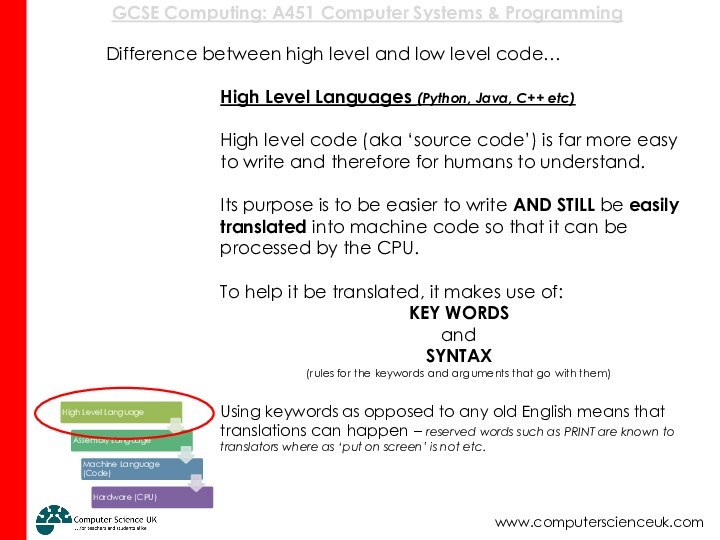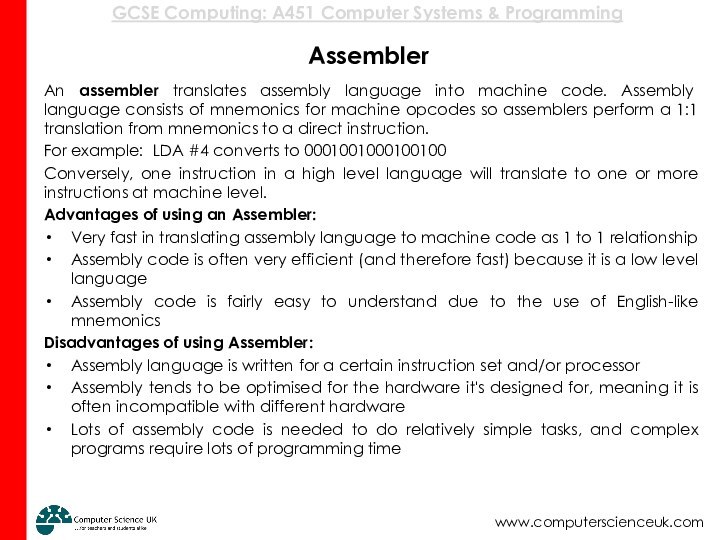Language (Low Level Language)
To overcome this issue, assembly language
was created.
This language has a small set of commands which represent certain pieces of machine code
This helped programmers as they didn’t have to remember sets of binary code, instead they learnt commands.
EG: Instead of memorising what 1011 or 1001 meant, they just had to remember commands like ADD and SUB
These commands are known as Mnemonics (simple memory aids).
Assembly language is still quite difficult to learn and use and this is why High Level Languages were produced.
(Due to less code, assembly language can be processed by the CPU far more quickly than high level languages)










































